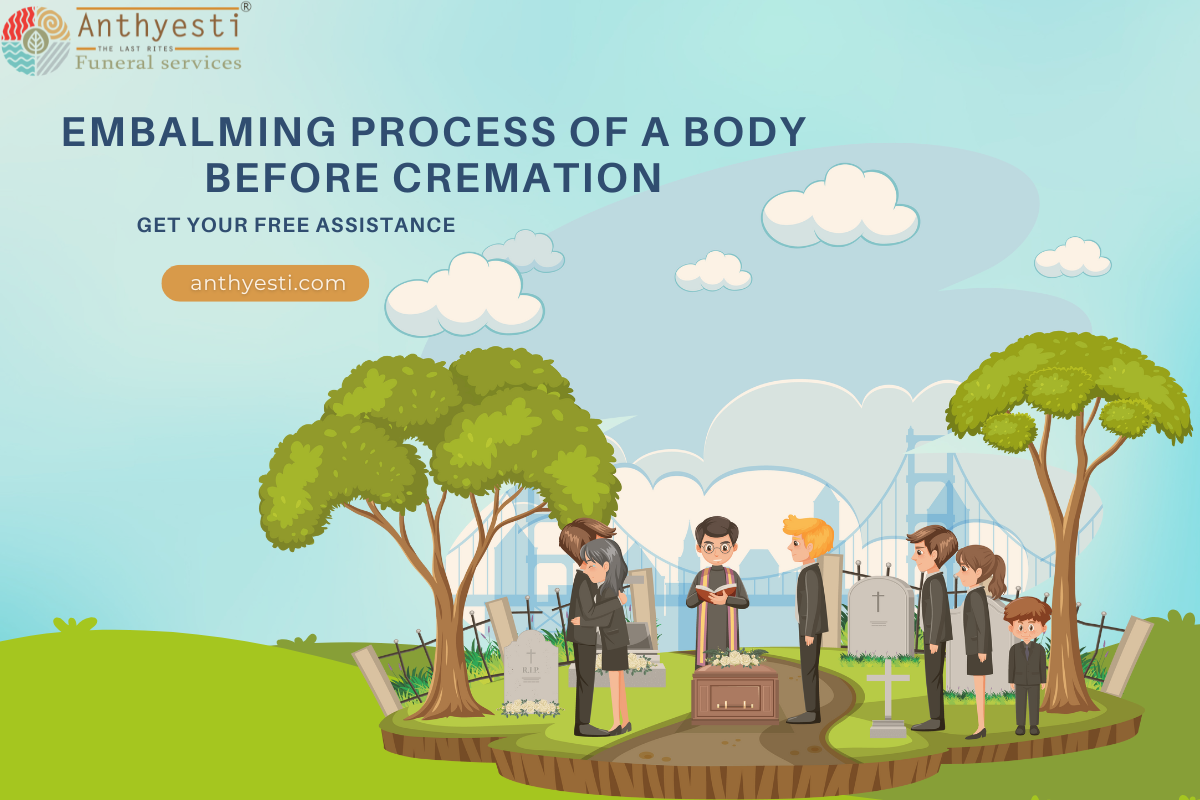Embalming Process of a Body Before Cremation
Embalming Process of a Body Before Cremation Preparing a body for cremation service in Bengaluru. involves steps like embalming, dressing, metal removal, and identification, all done with respect and dignity.
Cleaning and Embalming Process of a Body Before Cremation
Before cremation, personnel must remove medical waste items and other materials from the body. Embalming isn’t necessary for cremation, Embalming Process of a Body Before Cremation but it can slow decomposition for viewing services. During this process, personnel inject preservative chemicals and dyes into the tissues to slow decay.
After completing one embalming of the body, the staff dresses and accessorizes it. They place a special ID tag or toe tag on the body for identification throughout the entire cremation process. Embalming Process of a Body Before Cremation Although no viewing will occur, this step enables the family to bid their final goodbye for those desiring a funeral service.
During cremation, the coffin remains closed and covered with linen. It securely fastens and places on a gurney before cremating at high temperatures. Then, it processes the resulting bone fragments into ash and returns them to family members in an urn or scatters them as desired.
Dressing the Deceased in Appropriate Clothing
The deceased is washed, dressed in chosen clothing, and prepared for cremation by closing the mouth and nose, optionally shutting the eyes with caps, and ensuring no liquid leaks, before being placed in a casket for transport to the cremation chamber Embalming Process of a Body Before Cremation.
When dressing the deceased, avoid bright colors prone to melting in high cremation heat. Choose absorbent materials like cotton or wool, eschew silk or nylon, and avoid clothing with buttons. Sew a personal item into the attire for identification during preparation.
Placement of the Deceased in a Coffin or Other Container
The chosen casket or container for the body must permit proper air circulation during cremation and must line with flame-retardant material to prevent burning. Embalming Process of a Body Before Cremation Alternatively, one may use a combustible cardboard box if preferring it over a traditional coffin or container.
Lay the body in a dignified manner with hands at the sides, facing upwards, and feet slightly apart. In some cases, religious or ritual customs require placing certain items with the body, such as Bibles, objects of special significance to the deceased individual, or special clothing. After placing any suitable items inside the casket with the body, close it and convey it to a crematory.
The casket must be combustible for cremation, so it may vary from wood to metal. Remove or replace non-combustible materials like glass or plastic. Embalming Process of a Body Before Cremation A memorial service may occur before transport to the crematory.
The Process of Cremation and the Timelines Involved
After dressing and placing the body in a coffin or alternative container, it’s transported to a crematorium. Cremation typically takes around two hours for a normal-sized body, though larger bodies may require more time. Times vary due to differing facility procedures and the need to adhere to legal guidelines.
Before cremation, we create and review legal paperwork and permits. Then, we place the body in a coffin or approved container, allowing for personal tributes like jewelry and clothing. Embalming Process of a Body Before Cremation We can also place special items in a keepsake box for the family.
At the crematorium, staff conduct a final check to ensure they cremate the correct body and remove any jewelry or clothing. Then, they place the body in the chamber, incinerating it at high temperatures for two to three hours. Finally, they collect the ashes in an urn and return them to the family.
FAQ’s
1. What is the purpose of embalming a body before cremation?
Embalming the body before cremation serves several purposes, including preserving the body temporarily, slowing down decomposition, and allowing for viewing or funeral services if desired by the family.
2. How is the embalming process carried out before cremation?
The embalming process involves injecting embalming fluid into the deceased’s body to disinfect, preserve tissues, and delay decomposition. This is typically done through an incision in a major artery while simultaneously draining blood from a nearby vein.

